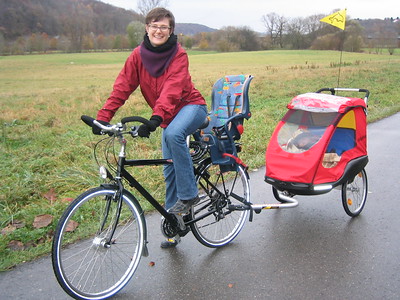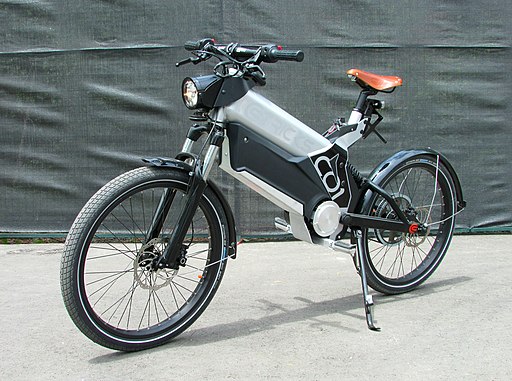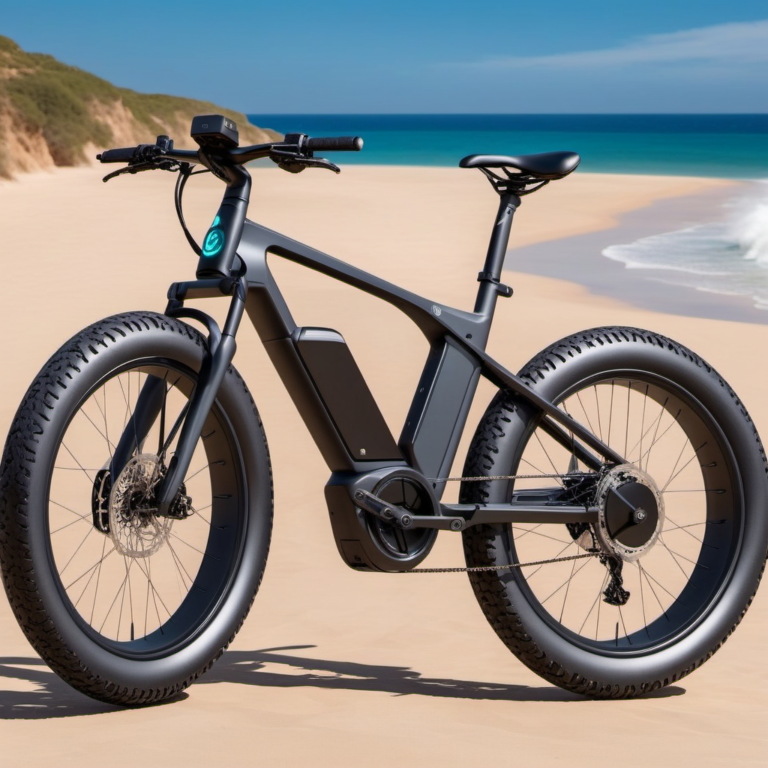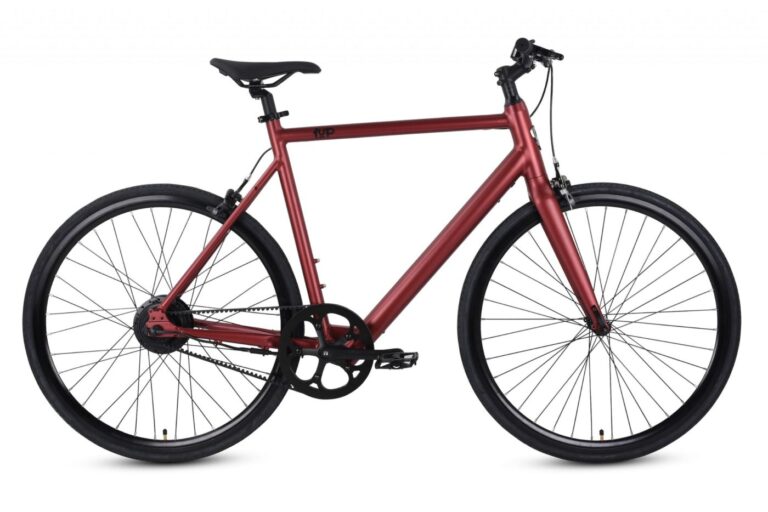Understanding Electric Bike Classes: A Comprehensive Guide
In recent years, the landscape of transportation has been undergoing a quiet revolution, with electric bikes emerging as a popular and sustainable mode of travel. Their rise in popularity can be attributed to a myriad of factors, including increasing environmental awareness, traffic congestion in urban areas, and a growing desire for healthier lifestyles. As individuals seek alternative modes of transportation that are not only eco-friendly but also efficient and enjoyable, electric bikes have swiftly risen to prominence.
However, navigating the diverse array of electric bikes available in today’s market can be daunting. That’s where the concept of electric bike classes comes into play. Electric bike classes serve as a crucial framework for understanding the different types of e-bikes, each tailored to meet specific needs and preferences.
Imagine electric bike classes as signposts along the journey of selecting the perfect two-wheeled companion. They provide clear distinctions between various models, helping riders make informed decisions based on their intended use, desired features, and local regulations.
In this comprehensive guide, we embark on a journey through the world of electric bike classes. Our mission is twofold: to unravel the intricacies of each class and to empower readers with the knowledge needed to select the most suitable electric bike for their individual needs. From urban commuters to off-road adventurers, we aim to provide insights and guidance that cater to a diverse range of riders. So, whether you’re a seasoned cyclist looking to embrace the electric revolution or a newcomer eager to explore new horizons, join us as we delve into the realm of electric bike classifications and unlock the possibilities they offer.
Key Takeaways
- Understanding Electric Bike Classes:
- Electric bikes are categorized into three main classes: Class 1, Class 2, and Class 3, each with distinct characteristics and capabilities.
- Class 1 electric bikes provide pedal-assist power, Class 2 electric bikes offer throttle-controlled convenience, and Class 3 electric bikes deliver enhanced speed and performance.
- Choosing the Right Electric Bike Class:
- When selecting an electric bike class, riders should consider their individual preferences, riding habits, and intended use cases.
- Factors such as terrain, desired speed, and legal regulations play a crucial role in determining the most suitable electric bike class for each rider.
- Adhering to Legal Requirements:
- It’s essential for electric bike riders to adhere to legal requirements and regulations governing electric bike usage in their region.
- Understanding and complying with local laws regarding speed limits, usage restrictions, and licensing ensures safe and responsible riding practices.
- Urban vs. Off-Road Electric Bike Classifications:
- Urban electric bikes are optimized for navigating city streets, while off-road electric bikes are designed for tackling rugged terrain and exploring natural environments.
- Urban electric bikes prioritize comfort, convenience, and practicality, while off-road electric bikes emphasize durability, performance, and versatility.
- Features and Benefits of Top-Rated Mountain and Touring Electric Bike Classes:
- Top-rated mountain electric bikes offer advanced features such as robust frames, powerful motors, and advanced suspension systems tailored to off-road riding.
- Long-distance touring electric bikes provide comfort, efficiency, and versatility for riders seeking epic adventures and extended rides.
- Converting Existing Bikes into Electric:
- Riders have the option to convert existing bikes into Class 1 or Class 3 electric bikes using conversion kits available in the market.
- However, it’s important to ensure compliance with local regulations and laws regarding electric bike classifications and modifications.
- Implications of Electric Bike Classes:
- Electric bike classes impact various aspects such as battery life, range, maintenance requirements, and insurance coverage.
- Riders should consider these implications when choosing an electric bike class to ensure optimal performance, longevity, and cost-effectiveness over time.
Explaining Electric Bike Classes:
Electric bike classes serve as a standardized system for categorizing e-bikes based on their capabilities and modes of operation. Understanding these classes is essential for both manufacturers and riders alike, as they provide clarity on the features, performance, and legal regulations associated with each type of electric bike.
Why Electric Bike Classes Matter: Electric bike classes matter because they provide consistency and clarity in a rapidly evolving industry. By categorizing e-bikes into distinct classes, riders can easily identify the type of assistance provided by the motor and the corresponding speed limits. This knowledge is crucial for ensuring compliance with local regulations and for making informed purchasing decisions.
The Three Main Classes: The electric bike industry generally recognizes three main classes of e-bikes, each with its own set of characteristics and regulatory requirements:
- Class 1 Electric Bikes: Class 1 e-bikes are equipped with a pedal-assist motor that provides assistance only when the rider is pedaling. These bikes do not have a throttle and are limited to a maximum assisted speed, typically around 20 mph (32 km/h). Class 1 e-bikes are popular among commuters and recreational cyclists seeking a boost in pedaling power without sacrificing the traditional cycling experience.
- Class 2 Electric Bikes: Unlike Class 1 e-bikes, Class 2 e-bikes feature a throttle-controlled motor that allows riders to activate assistance without pedaling. This throttle can provide a constant level of assistance, regardless of pedaling effort. Class 2 e-bikes also have a maximum assisted speed of around 20 mph (32 km/h). These bikes appeal to riders who prefer a more effortless riding experience, as they can simply twist the throttle to accelerate.
- Class 3 Electric Bikes: Class 3 e-bikes combine the pedal-assist functionality of Class 1 e-bikes with a higher maximum assisted speed. With pedal assistance, Class 3 e-bikes can reach speeds of up to 28 mph (45 km/h), offering a faster riding experience for commuters and enthusiasts alike. However, like Class 1 e-bikes, Class 3 e-bikes do not have a throttle and rely on pedaling to activate the motor.
Pedal-Assist vs. Throttle-Controlled E-Bikes: It’s important to note the distinction between pedal-assist and throttle-controlled e-bikes. Pedal-assist e-bikes provide assistance only when the rider is actively pedaling, with the level of assistance typically determined by the selected assist mode and the rider’s pedaling cadence. Throttle-controlled e-bikes, on the other hand, allow riders to activate the motor using a throttle mechanism, independent of pedaling effort. Each type of e-bike offers a unique riding experience, catering to different preferences and riding styles.
RELATED CONTENT – Where Can You Ride An Electric Bike?
RELATED CONTENT – Do You Need a License to Ride an Electric Bike?
Class 1 Electric Bikes: Pedal-Assist Power
Class 1 electric bikes represent a harmonious blend of traditional cycling and electric assistance, providing riders with a seamless and intuitive riding experience. These bikes are equipped with a pedal-assist motor that kicks in to augment the rider’s pedaling efforts, offering a boost of power without completely taking over the cycling experience.
Features and Benefits:
- Pedal-Assist Technology: Class 1 electric bikes feature pedal-assist technology, which means that the motor provides assistance only when the rider is actively pedaling. This system enhances the rider’s pedaling power, making it easier to conquer hills, cover longer distances, and maintain a consistent pace.
- Enhanced Riding Experience: By seamlessly integrating electric assistance with traditional pedaling, Class 1 e-bikes offer a natural and enjoyable riding experience. Riders can still enjoy the physical benefits of cycling while benefiting from the added power of the electric motor.
- Versatility: Class 1 electric bikes are versatile machines that cater to a wide range of riders, from commuters navigating city streets to leisure cyclists exploring scenic routes. Their pedal-assist functionality makes them suitable for various terrains and riding conditions.
Speed Limitations and Power Output:
- Speed Limit: Class 1 electric bikes are typically limited to a maximum assisted speed of around 20 mph (32 km/h). This speed limitation ensures that Class 1 e-bikes maintain a balance between providing assistance and promoting safe riding practices.
- Power Output: The power output of Class 1 electric bikes varies depending on the specific model and motor configuration. Motors commonly range from 250 watts to 750 watts, providing ample assistance for most riding scenarios without compromising efficiency or battery life.
Regulations and Riding Locations:
- Legal Compliance: Class 1 electric bikes are recognized as bicycles in many jurisdictions and are subject to the same regulations and laws as traditional bicycles. This classification allows riders to enjoy the benefits of electric assistance without the need for special licensing or registration.
- Riding Locations: Class 1 e-bikes are typically permitted wherever traditional bicycles are allowed, including bike lanes, multi-use paths, and public roads. However, regulations may vary depending on local ordinances and trail management policies, so it’s essential for riders to familiarize themselves with any restrictions in their area.
Class 1 electric bikes offer a compelling combination of pedal-powered performance and electric assistance, making them an attractive option for riders seeking a versatile and accessible mode of transportation or recreation. With their pedal-assist technology, moderate speed limits, and legal compliance, Class 1 e-bikes provide an excellent entry point into the world of electric cycling for riders of all skill levels.
RELATED CONTENT – Are Ebikes Allowed in Cades Cove?
Class 2 Electric Bikes: Throttle-Controlled Convenience
Class 2 electric bikes offer a convenient and accessible riding experience by incorporating throttle-controlled operation alongside electric pedal-assist functionality. With the ability to activate the motor using a throttle mechanism, riders can enjoy effortless acceleration and increased control over their speed, making Class 2 e-bikes particularly appealing for urban commuters and recreational cyclists alike.
Description and Comparison with Class 1:
- Throttle-Controlled Operation: One of the defining features of Class 2 electric bikes is their throttle-controlled operation, which allows riders to activate the motor without the need for pedaling. This feature provides instant acceleration and is particularly useful in situations where rapid speed adjustments are required, such as navigating through traffic or tackling steep inclines.
- Difference from Class 1: Unlike Class 1 electric bikes, which rely solely on pedal-assist technology, Class 2 e-bikes offer the added convenience of throttle control. This means that riders have the option to engage the motor without pedaling, providing a more effortless riding experience.
Pros and Cons of Throttle Control:
- Pros:
- Convenience: Throttle control offers unmatched convenience, allowing riders to effortlessly accelerate and maintain their desired speed with minimal effort.
- Instant Power: With throttle control, riders have access to instant power on demand, making it easier to tackle challenging terrain or accelerate from a standstill.
- Accessible Riding: Throttle control makes electric biking accessible to a wider range of riders, including those with mobility issues or limited cycling experience.
- Cons:
- Reduced Exercise Benefits: Throttle-controlled operation may result in reduced physical exertion compared to pedal-assist cycling, potentially diminishing the exercise benefits of riding.
- Battery Drain: Continuous use of the throttle can deplete the battery more quickly than pedal-assist cycling, reducing overall range between charges.
- Regulatory Considerations: Some jurisdictions may impose additional regulations or restrictions on throttle-controlled e-bikes, particularly concerning speed limits or usage on certain trails or paths.
Regulations Specific to Class 2 E-Bikes:
- Speed Limitations: Like Class 1 electric bikes, Class 2 e-bikes are typically limited to a maximum assisted speed of around 20 mph (32 km/h) to comply with regulations in many jurisdictions.
- Throttle Restrictions: Some areas may have specific regulations regarding the use of throttles on electric bikes, such as prohibiting throttle operation on certain trails or bike paths. Riders should familiarize themselves with local laws and regulations governing the use of Class 2 e-bikes in their area.
Class 2 electric bikes offer a blend of convenience and versatility, with throttle-controlled operation providing an added layer of accessibility and ease of use. While they may not offer the same level of exercise benefits as pedal-assist cycling, Class 2 e-bikes appeal to riders seeking a more effortless and convenient riding experience, particularly in urban environments or for leisurely outings.
RELATED CONTENT – Electric Bike Buying Guide
RELATED CONTENT – Guide to Types of Electric Bikes
Class 3 Electric Bikes: Enhanced Speed and Performance
Class 3 electric bikes represent the pinnacle of electric bike technology, offering riders an exhilarating combination of pedal-assist power and enhanced speed capabilities. Designed for those who crave a faster and more dynamic riding experience, Class 3 e-bikes deliver unparalleled performance without compromising on efficiency or safety.
Features of Class 3 Electric Bikes:
- Pedal-Assist Power: Like Class 1 electric bikes, Class 3 e-bikes feature pedal-assist technology, providing riders with a boost of power as they pedal. This seamless integration of electric assistance enhances the rider’s pedaling efforts, allowing for smoother acceleration and improved performance.
- Increased Speed: One of the defining features of Class 3 electric bikes is their higher maximum assisted speed. With pedal assistance, Class 3 e-bikes can reach speeds of up to 28 mph (45 km/h), making them ideal for commuters looking to cover longer distances in less time or for enthusiasts seeking a more thrilling riding experience.
- Enhanced Performance: Class 3 e-bikes are equipped with powerful motors and high-capacity batteries, allowing for sustained performance over extended periods. Whether navigating city streets, conquering steep hills, or cruising along scenic routes, Class 3 e-bikes deliver a level of performance that surpasses traditional bicycles.
Speed Limitations and Power Output:
- Maximum Assisted Speed: Class 3 electric bikes are legally limited to a maximum assisted speed of 28 mph (45 km/h) when using pedal assistance. This speed limitation ensures that Class 3 e-bikes maintain a balance between providing enhanced speed capabilities and promoting rider safety.
- Power Output: Class 3 e-bikes typically feature robust motors with power outputs ranging from 500 watts to 750 watts. This increased power enables Class 3 e-bikes to deliver rapid acceleration and sustained performance, even when tackling challenging terrain or demanding riding conditions.
Regulations and Riding Restrictions:
- Legal Compliance: Class 3 electric bikes are subject to specific regulations and laws governing their use in various jurisdictions. In many areas, Class 3 e-bikes are classified as bicycles and are permitted on public roads, bike lanes, and multi-use paths.
- Speed Restrictions: Riders must adhere to speed limits when operating Class 3 e-bikes, particularly in areas where lower speed limits are enforced, such as residential neighborhoods or shared pathways.
- Trail Access: While Class 3 e-bikes are suitable for use on roads and designated bike paths, some trails or recreational areas may have restrictions or limitations on the use of electric bikes. Riders should familiarize themselves with local regulations and trail access policies before riding Class 3 e-bikes in these areas.
Class 3 electric bikes offer riders an exhilarating combination of speed, power, and performance, making them an ideal choice for commuters, fitness enthusiasts, and adventure seekers alike. With their enhanced capabilities and legal compliance, Class 3 e-bikes provide a thrilling and efficient alternative to traditional bicycles, allowing riders to experience the joy of cycling at higher speeds and with greater ease.
RELATED CONTENT – Pedal Assist vs Throttle Control: Choosing the Right Ebike for You
Ebike Classes Comparison Table
| Features | Class 1 Electric Bike | Class 2 Electric Bike | Class 3 Electric Bike |
|---|---|---|---|
| Assist Type | Pedal-assist | Throttle and pedal-assist | Pedal-assist |
| Maximum Speed | Typically up to 20 mph (32 km/h) | Typically up to 20 mph (32 km/h) | Up to 28 mph (45 km/h) |
| Regulations | Subject to bicycle regulations | Subject to bicycle regulations | May have additional regulations |
| Throttle Control | Not present | Present | Not present |
| Usage Restrictions | Allowed on bike lanes and paths | Allowed on bike lanes and paths | Restrictions may apply on certain trails or paths |
| Battery Life | Similar to other e-bikes | Similar to other e-bikes | Similar to other e-bikes |
| Range | Similar to other e-bikes | Similar to other e-bikes | Similar to other e-bikes |
| Power Output | Typically up to 750 watts | Typically up to 750 watts | Typically up to 750 watts |
| Terrain | Suitable for urban and light off-road | Versatile for urban and light off-road | Suitable for various terrains including off-road |
| Rider Experience | Balanced assistance for leisurely rides | Convenient throttle for quick acceleration | Enhanced speed for thrill-seekers |
| Common Use Cases | Commuting, leisurely rides | Urban commuting, recreational cycling | Performance riding, long-distance commuting |
Understanding Different Use Cases: Urban vs. Off-Road
Electric bikes are designed to cater to a variety of riding environments and purposes, with urban and off-road classifications representing two distinct categories tailored to specific use cases. Understanding the differences between these classifications is essential for riders seeking an electric bike that aligns with their intended riding environment and preferences.
Urban Electric Bike Classifications:
- Purpose: Urban electric bikes are specifically designed for navigating city streets, commuting to work, and running errands in urban environments. These bikes prioritize comfort, convenience, and practicality, making them ideal for riders looking for efficient and reliable transportation solutions in urban settings.
- Features:
- Compact Design: Urban electric bikes often feature a sleek and streamlined design, allowing for easy maneuverability in crowded urban environments and tight spaces.
- Integrated Accessories: Many urban e-bikes come equipped with practical accessories such as fenders, racks, and lights, enhancing their functionality and utility for daily commuting and errands.
- Smooth Ride: Suspension systems and ergonomic designs help urban electric bikes absorb shocks and vibrations from uneven city streets, providing a comfortable and smooth riding experience for commuters.
- Benefits:
- Efficient Commuting: Urban electric bikes offer a convenient and eco-friendly alternative to traditional modes of transportation, allowing riders to bypass traffic congestion and reach their destinations quickly and efficiently.
- Versatility: With their agile handling and practical features, urban e-bikes are well-suited for a variety of urban riding scenarios, including commuting, grocery shopping, and recreational outings.
- Sustainable Transportation: By opting for urban electric bikes, riders can reduce their carbon footprint and contribute to a more sustainable urban transportation infrastructure.
Off-Road Electric Bike Classifications:
- Purpose: Off-road electric bikes, also known as electric mountain bikes (eMTBs), are designed for tackling rugged terrain and exploring off-the-beaten-path trails and wilderness areas. These bikes prioritize durability, performance, and versatility, making them ideal for riders seeking adventure and exploration in natural environments.
- Features:
- Robust Construction: Off-road electric bikes feature rugged frames, wide tires, and suspension systems designed to withstand the rigors of off-road riding and provide stability and control on uneven terrain.
- Powerful Motor: High-torque motors with responsive power delivery are a hallmark of off-road electric bikes, providing riders with the extra boost needed to conquer steep climbs and challenging trails.
- Advanced Components: Components such as hydraulic disc brakes, dropper seatposts, and wide-range gear systems enhance the performance and versatility of off-road electric bikes, allowing riders to tackle a wide range of terrain with confidence.
- Benefits:
- Exploration: Off-road electric bikes open up a world of adventure and exploration, allowing riders to access remote trails, scenic vistas, and natural landscapes that are inaccessible to traditional bicycles.
- Thrilling Performance: With their powerful motors and advanced suspension systems, off-road e-bikes offer a thrilling and dynamic riding experience, enabling riders to tackle technical terrain and push their limits on challenging trails.
- Fitness and Fun: Riding off-road electric bikes provides a full-body workout and an immersive outdoor experience, making it an enjoyable and rewarding way to stay active and connect with nature.
Comparison:
- Terrain: Urban electric bikes are optimized for navigating smooth city streets and urban infrastructure, while off-road electric bikes are designed to handle rough and uneven terrain encountered in natural environments.
- Features: Urban e-bikes prioritize practicality and comfort, with integrated accessories and ergonomic designs, while off-road e-bikes emphasize durability, performance, and advanced components tailored to off-road riding.
- Use Cases: Urban electric bikes are ideal for commuting, running errands, and recreational riding in urban environments, while off-road electric bikes are best suited for trail riding, mountain biking, and exploring wilderness areas.
Understanding the distinctions between urban and off-road electric bike classifications enables riders to select the most suitable e-bike for their intended riding environment and preferences. Whether navigating city streets or conquering rugged trails, electric bikes offer a versatile and exhilarating way to explore the world around us.
Legal Requirements and Regulations:
Navigating the legal landscape surrounding electric bikes is essential for riders to ensure compliance with local regulations and laws. Understanding the legal requirements associated with different classes of electric bikes is crucial for safe and responsible riding in various regions.
Legal Requirements for Riding Different Classes of Electric Bikes:
Class 1 Electric Bikes:
- Class 1 electric bikes are typically treated similarly to traditional bicycles in many jurisdictions.
- Riders of Class 1 e-bikes are often subject to the same regulations and laws as cyclists, including rules regarding speed limits, traffic signals, and road usage.
- Some regions may require riders of Class 1 electric bikes to adhere to specific power and speed limitations, such as a maximum assisted speed of 20 mph (32 km/h).
Class 2 Electric Bikes:
- The legal requirements for Class 2 electric bikes vary depending on local regulations and laws.
- In some areas, riders of Class 2 e-bikes may be subject to additional restrictions or regulations due to the presence of throttle-controlled operation.
- It’s important for riders of Class 2 e-bikes to familiarize themselves with any specific regulations governing throttle usage, speed limits, and trail access in their region.
Class 3 Electric Bikes:
- Class 3 electric bikes typically have stricter regulations compared to Class 1 and Class 2 e-bikes due to their higher maximum assisted speed.
- Riders of Class 3 e-bikes may be subject to additional licensing, registration, or insurance requirements in certain jurisdictions.
- Speed limits and usage restrictions for Class 3 e-bikes vary depending on local regulations, with some areas imposing specific speed limits for electric bikes on public roads and trails.
Addressing Specific Regulations in Different Regions:
United States:
- In the United States, electric bike regulations vary by state, with some states adopting the three-class system outlined by industry standards, while others have their own regulations.
- Riders should consult local transportation authorities or relevant government agencies to understand the specific regulations governing electric bike usage in their state.
European Union:
- The European Union has standardized regulations for electric bikes, including specifications for maximum power output and speed limits.
- Class 1 and Class 2 electric bikes are typically subject to less stringent regulations compared to Class 3 e-bikes, which may require additional certification and compliance with specific safety standards.
Canada:
- In Canada, electric bike regulations are determined at the provincial level, with some provinces adopting the three-class system similar to the United States.
- Riders should familiarize themselves with provincial regulations governing electric bike usage, including speed limits, age restrictions, and helmet requirements.
Navigating the legal requirements and regulations for riding electric bikes requires careful consideration of local laws and regulations governing the use of e-bikes in different regions. By understanding the legal framework surrounding electric bike classifications and adhering to relevant regulations, riders can enjoy a safe and enjoyable riding experience while minimizing the risk of legal complications.
RELATED CONTENT – Fat Tire Electric Bikes vs Traditional Moutain Bikes
Evaluating Top-Rated Mountain and Touring Electric Bike Classes
Electric bikes have transformed the world of cycling, offering riders enhanced capabilities to conquer rugged terrain, explore remote destinations, and embark on epic adventures. Among the top-rated electric bike classes, mountain e-bikes and long-distance touring e-bikes stand out for their advanced features, durability, and performance tailored to specific riding disciplines.
Top-Rated Mountain Electric Bike Classes:
- Trail Electric Bike Class:
- Features:
- Agile and versatile design optimized for all-around trail riding.
- Full-suspension frame with adjustable suspension components for enhanced comfort and control.
- Mid-drive motor system providing balanced power delivery and efficient climbing performance.
- Wide-range gearing and powerful disc brakes for precise handling and reliable stopping power.
- Tubeless-ready wheels with knobby tires for optimal traction on various trail surfaces.
- Features:
- Enduro Electric Bike Class:
- Features:
- Robust frame construction with long-travel suspension designed to withstand aggressive riding.
- High-torque motor system with customizable power settings for tackling technical descents and steep climbs.
- Slack geometry and aggressive tire tread patterns for maximum traction and stability at high speeds.
- Dropper seatpost for on-the-fly saddle height adjustments during challenging terrain.
- Reinforced components and durable drivetrain for reliable performance in demanding conditions.
- Features:
- Downhill Electric Bike Class:
- Features:
- Heavy-duty frame with downhill-specific geometry for maximum stability and control at high speeds.
- Dual-crown suspension fork and rear shock with ample travel to absorb large impacts and rough terrain.
- High-output motor system providing instant acceleration and responsive power delivery.
- Hydraulic disc brakes with oversized rotors for unparalleled stopping power and modulation.
- Purpose-built components and reinforced frame construction to withstand the rigors of downhill riding.
- Features:
RELATED CONTENT – Can Fat Tire Electric Bikes Handle Bikepacking or Long Distance Touring?
Benefits of Long-Distance Touring Electric Bike Classes:
- Comfortable Riding Position: Long-distance touring electric bikes are designed with ergonomic geometry and features such as adjustable handlebars and saddle positions to ensure comfort during extended rides.
- Efficient Pedal-Assist: Pedal-assist technology provides consistent and efficient assistance, allowing riders to cover long distances with less effort and without draining the battery quickly.
- Ample Storage: Touring electric bikes come equipped with integrated racks, panniers, and fenders, offering ample storage space for carrying gear, supplies, and provisions for multi-day trips.
- Versatility: Long-distance touring electric bikes are versatile machines capable of handling various road conditions, from smooth pavement to gravel paths and mild off-road trails, making them ideal for exploring diverse landscapes and destinations.
- Extended Battery Range: With larger capacity batteries and efficient motor systems, touring electric bikes offer extended range, enabling riders to travel further between charges and spend more time exploring without worrying about running out of power.
Top-rated mountain electric bike classes offer riders a range of specialized features and capabilities tailored to different riding disciplines, from versatile trail riding to aggressive downhill descents. Meanwhile, long-distance touring electric bikes provide comfort, efficiency, and versatility for riders seeking epic adventures on two wheels.
FAQs:
Yes, it is possible to convert an existing bike into a Class 1 or Class 3 electric bike using conversion kits available in the market. These kits typically include a motor, battery, controller, and other necessary components to transform a conventional bike into an electric-assist bike. However, it’s essential to ensure that the conversion kit and resulting e-bike comply with local regulations and laws regarding electric bike classifications.
Yes, regulations for electric bikes vary depending on the class and jurisdiction. In general, Class 1, Class 2, and Class 3 electric bikes are subject to different regulations regarding speed limits, power output, and where they can be ridden. It’s important for riders to familiarize themselves with the specific regulations governing electric bike classifications in their area to ensure compliance and safe riding practices.
The legality of riding Class 3 electric bikes depends on local regulations and laws governing electric bike usage. In many areas, Class 3 electric bikes are permitted on public roads, bike lanes, and multi-use paths, similar to Class 1 electric bikes. However, riders should be aware that some jurisdictions may impose additional restrictions or require specific licensing or registration for Class 3 e-bikes. It’s recommended to research and adhere to local regulations when riding Class 3 electric bikes.
The impact of electric bike classes on maintenance requirements and costs varies depending on factors such as the type of motor system, battery technology, and riding conditions. Generally, Class 1 electric bikes with pedal-assist systems tend to have simpler mechanical components and lower maintenance costs compared to Class 2 or Class 3 e-bikes with throttle-controlled operation. Additionally, Class 3 electric bikes may require more frequent maintenance due to their higher speeds and power output, potentially leading to increased maintenance costs over time. It’s essential for riders to follow recommended maintenance schedules and practices to ensure the longevity and optimal performance of their electric bikes, regardless of class.
Conclusion:
In conclusion, exploring the world of electric bike classifications has unveiled a diverse array of options tailored to meet the needs and preferences of riders across various disciplines and environments. From the urban commuter seeking convenience and efficiency to the off-road adventurer craving adrenaline-fueled thrills, electric bikes offer an accessible and sustainable mode of transportation and recreation for riders of all levels.
Understanding the distinctions between electric bike classes, from the pedal-assist power of Class 1 to the throttle-controlled convenience of Class 2 and the enhanced speed and performance of Class 3, empowers riders to make informed decisions and navigate the legal landscape with confidence. Furthermore, exploring top-rated mountain and touring electric bike classes reveals advanced features and benefits designed to elevate the riding experience and unlock new adventures on two wheels.
As the electric bike revolution continues to gain momentum, we invite you to join the conversation. Share your thoughts, experiences, and questions in the comments section below. Let’s connect, learn from each other, and inspire more people to embrace the joy of electric biking.
Join the Conversation
Have a question or want to share your electric biking journey? Drop a comment below and let’s continue the conversation! Don’t forget to share this guide with friends and fellow riders who might benefit from exploring the world of electric bike classifications. Together, let’s spread the joy of electric biking and inspire more people to embark on exciting adventures on two wheels.
External Sources:
- Articles and Studies:
- Manufacturer Websites:
Kristina Grant is not just an enthusiast but a true authority on electric bikes. Nestled in the coastal beauty of Virginia, Kristina has found the perfect backdrop for her passion for electric biking. As a dedicated wife and homeschooling mom, her life revolves around family, faith, and the thrill of adventure.
Originally hailing from Ohio, Kristina's journey with electric bikes began as a curiosity and quickly evolved into a deep expertise. Her blog is a testament to her love for electric biking, combining her fascination for eco-friendly transportation with her coastal lifestyle.
When she's not cruising the beach on her electric bike, you'll find Kristina indulging in her other loves: long walks along the shore, getting lost in a good book, and cherishing moments with her loved ones. With a heart as big as her love for animals, especially cats, Kristina brings a unique perspective to the electric bike world, grounded in her strong faith in God and her dedication to a sustainable lifestyle.
Through her blog, Kristina shares her extensive knowledge of electric bikes, offering valuable insights, tips, and recommendations to fellow enthusiasts. Whether you're a seasoned rider or a newcomer to the electric bike scene, Kristina's blog is your go-to source for all things electric biking, fueled by her passion, expertise, and the scenic beauty of coastal Virginia.







